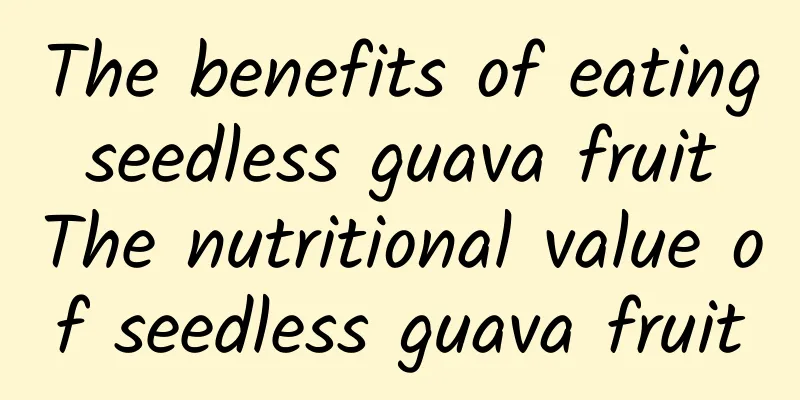How to prevent and control cowpea diseases

|
The most troublesome thing about growing cowpeas is that cowpeas often suffer from various diseases. What should we do? Today, we will introduce to you how to prevent and control them: 1. Cowpea root rot:The main affected parts are the taproot and the stem under the ground. This disease is a soil-borne disease that is prone to occur in high temperature and high humidity, and is more serious in rainy autumn, poorly drained, heavy and low-lying land, and continuous cropping. Prevention and control methods: 1. Plots with severe disease should be rotated for 3-4 years with onion and garlic vegetables, gramineous crops, etc. 2. Implement high ridges or deep ditch narrow ridges, frequently clear the ditch and drain water, reduce humidity, promptly remove the remains of diseased plants, burn or bury them deeply. 3. Chemical control. When sporadic disease occurs in the field, start using drugs. There are two methods of application: root watering and spraying. The drugs can be carbendazim, anti-mold wettable powder, thiophanate wettable powder, and anti-curing. The concentration of the root watering solution can be slightly increased, 250 grams of the solution is poured per plant, once every 7-10 days, and 4-5 times; the spray solution is diluted with water according to the conventional ratio, focusing on spraying the base of the bean stem, once every 7-10 days, and spraying 3 times in a row. 2. Cowpea rust:It mostly occurs in the middle and late stages of growth, mainly harming the leaves. In severe cases, stems, petioles, and pods may be affected. Rainy years in autumn often cause this disease to spread. Long-term continuous cropping, low-lying terrain, and over-dense planting can all aggravate the severity of the disease. For prevention and control, the following spraying agents can be used in the early stage of the disease: 25% triadimefon wettable powder 2000 times solution, 5% carboxin emulsifiable concentrate 800 times solution, 50% carbendazim wettable powder 500 times solution, etc. Generally, spray once every 7-10 days, and continue 2-3 times (the interval between the use of triadimefon can be delayed to 15 days). 3. Cowpea sooty mold disease:The disease begins after the true leaves of cowpea appear. The disease is most serious before harvest, mainly affecting leaves and causing leaf fall. High temperature and high humidity are conducive to the disease, and hot rains are more severe. For prevention and control, avoid over-dense sowing to facilitate field ventilation and light transmission; promptly remove infected fallen leaves in the field to reduce the source of reinfection; spray pesticides in the early stage of the disease to control infection. The pesticides can be chlorothalonil wettable powder (600 times diluted for 75% content), carbendazim (800 times diluted for 40% suspension concentrate), etc. 4. Cowpea virus disease:The disease is more serious in autumn cowpea. The diseased plants initially produce yellow-green spots on the leaves, and then the dark green parts gradually protrude and become warty, and the leaves are deformed; seriously diseased plants grow slowly, are short, and have few flowers and pods. The prevention and control is mainly to kill aphids in the early stage, especially in drought years, and pay more attention to aphid prevention; in addition, strengthen cultivation management to enhance the disease resistance of plants. 5. Cowpea borer and pod borer:The cowpea borer, also known as the bean borer, is a major pest of cowpea. It occurs 4-5 generations each year. In terms of prevention and control, in addition to promptly removing fallen flowers and pods in the field, picking off the damaged curled leaves and pods and burning them in a centralized manner, The main method is to use pesticides for prevention and control. The strategy of pesticide prevention and control is to "treat flowers but not pods", that is, to use the pesticide for the first time when cowpea begins to bloom, and then once every 7-10 days, for 2-3 times in a row. The best time to spray the pesticide is when the petals are open before 8 a.m., when the insect body can fully contact the pesticide solution; the pesticide can be pyrethroids and their compound preparations, such as dimethoate, sulfamoxadine, and methamoxadine. If the pesticide is used after pod formation, it must be sprayed after picking, and it is forbidden to spray before picking to avoid poisoning. Bean pod borers are more harmful to soybeans, but also to cowpeas, and often occur together with cowpea borers. This insect also bites the pods with its larvae, bores into the beans, and the pods are filled with insect feces, causing the pods and beans to rot. It can be treated concurrently when preventing and controlling borers. |
<<: How to store broad beans, broad bean storage method
Recommend
The efficacy, effects and taboos of nectarine
Nectarine is a kind of fruit peach. It has a smoo...
The efficacy and function of Tianma lean meat porridge
Tianma Lean Meat Congee is a traditional Chinese ...
Taboos and precautions of drinking lemon water
Many people like to drink lemon slices soaked in ...
How to cook chestnuts deliciously How to cook chestnuts easy to peel
Most people like to cook chestnuts before eating ...
How is Drew University? Drew University reviews and website information
What is Drew University? Drew University is a well...
Carrot and Spinach Porridge
I heard that carrot and spinach porridge can cure...
How to Make Sweet and Sour Jerusalem Artichokes
How to make sweet and sour Jerusalem artichokes? ...
The efficacy and function of fried lentils
Lentils are one of the most common vegetables in ...
How is MSN France? MSN France reviews and website information
What is MSN France? MSN France is the French branc...
How to eat edible cactus How to eat edible cactus
Many people think that cactus is a green flower p...
How to eat ginkgo nuts and the benefits of eating ginkgo nuts
What else do you not know about the way to eat gi...
Characteristics and yield performance of Xialu No. 3 loofah
I don’t know if you have heard of Xialv No. 3 loo...
What fruits can remove freckles? What fruits can remove freckles?
When beauty-conscious women have spots on their f...
Yuanzu Snow Mooncake Shelf Life
I believe everyone eats mooncakes, but have you e...
Nutritional value and efficacy of salmon fillet
Salmon fillet has high nutritional value and is v...









